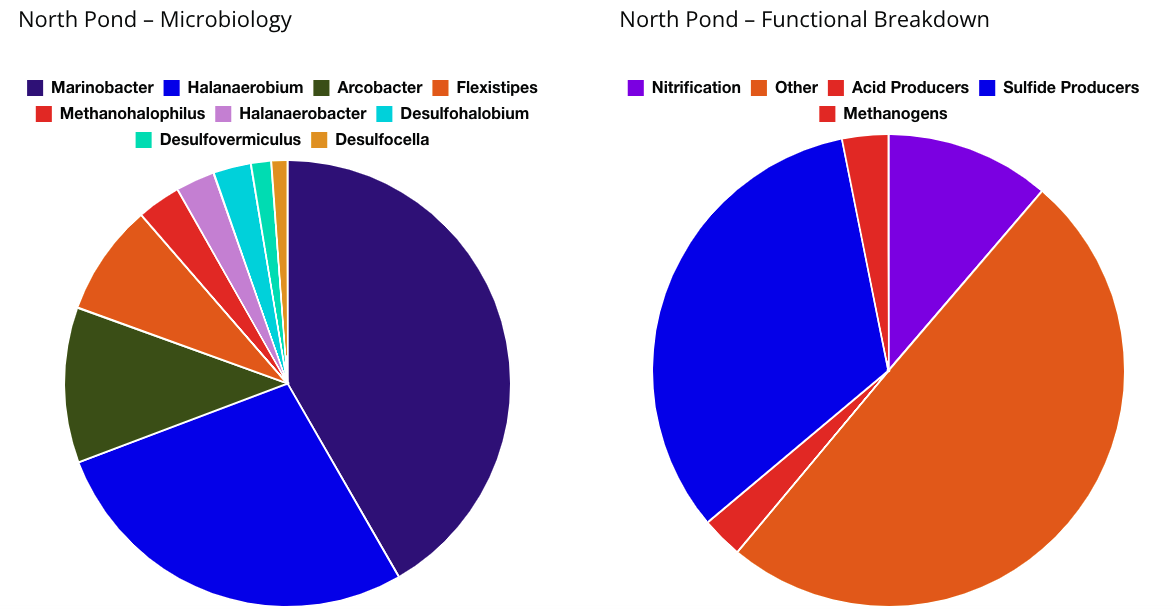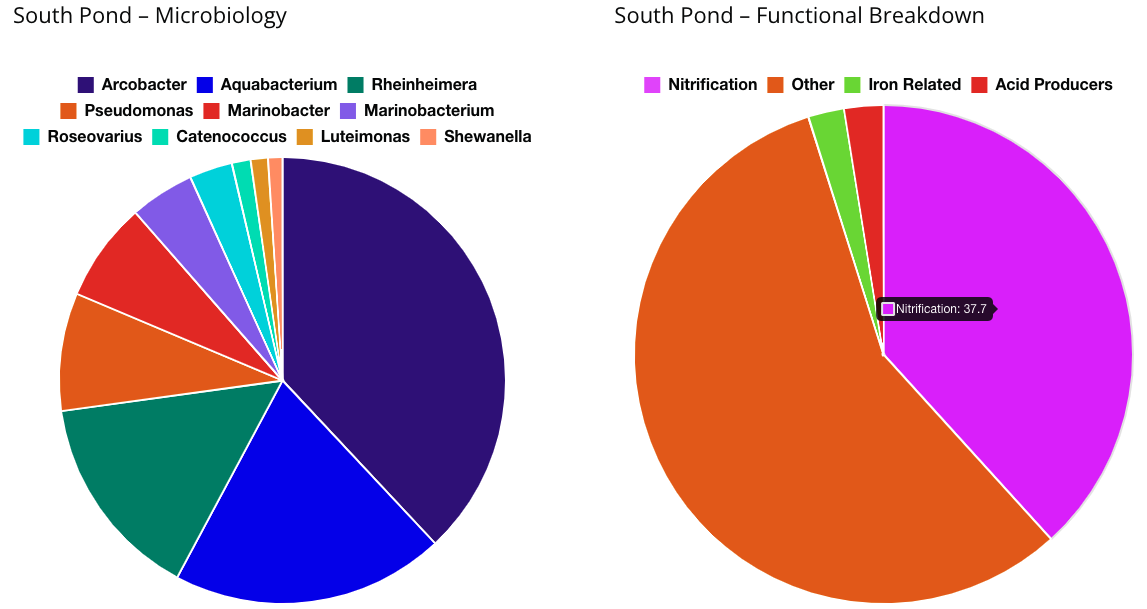Mic Risk Assessment of Frac Ponds
MICROBIOLOGICALLY INFLUENCED CORROSION RISK ASSESSMENT OF FRAC PONDS
Background
An Operator was experiencing sporadic corrosion issues in their North and South frac pond transfer lines. Prior to OSP’s assessment, the cause of these corrosion issues had not yet been determined.
Objective
To determine potential sources for corrosion, OSP collected two samples, one from each pond (North and South), for complete water analysis (CWA) and LifeCheck DNA 16S Sequencing. This assessment focused on threatening microbes and water conditions that could lead to microbiologically influenced corrosion (MIC).
LifeCheck DNA 16S Sequencing
The North Pond has a large population (31.3%) of sulfide producing microbes dominated by Halanaerobium (makes up 26.2% of the total community) presenting a souring and MIC threat.


Complete Water Analysis
- The North pond contains more threatening conditions with total dissolved solids (TDS) greater than 130,000 mg/L increasing the conductivity of the water, allowing corrosion rates to increase.
- The pH of the North pond is somewhat acidic at a pH of 5.9, indicating a possibility of acid corrosion.
Result
From the findings of this assessment, the following recommendations were made:
- The ponds should be treated to reduce the overall microbial load.
- Aeration of chemical treatment should be explored
- The North pond should be closely monitored for microbial fluctuations
- Ensure assets are maintained with either pH adjustment or corrosion inhibitor for high brine systems.
Conclusion
By conducting LifeCheck DNA qPCR and 16S Sequencing in conjunction with a complete water analysis, it was determined that there are measurable, both biological and chemical, within the two frac ponds. Of the two ponds, the North Pond had significantly higher corrosion threats within the water. With a greater threat present, we recommended using the South Pond.

